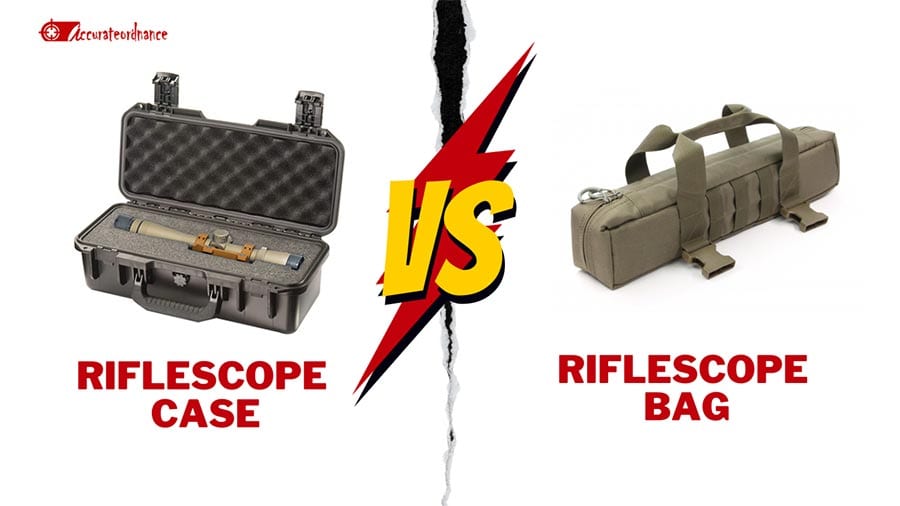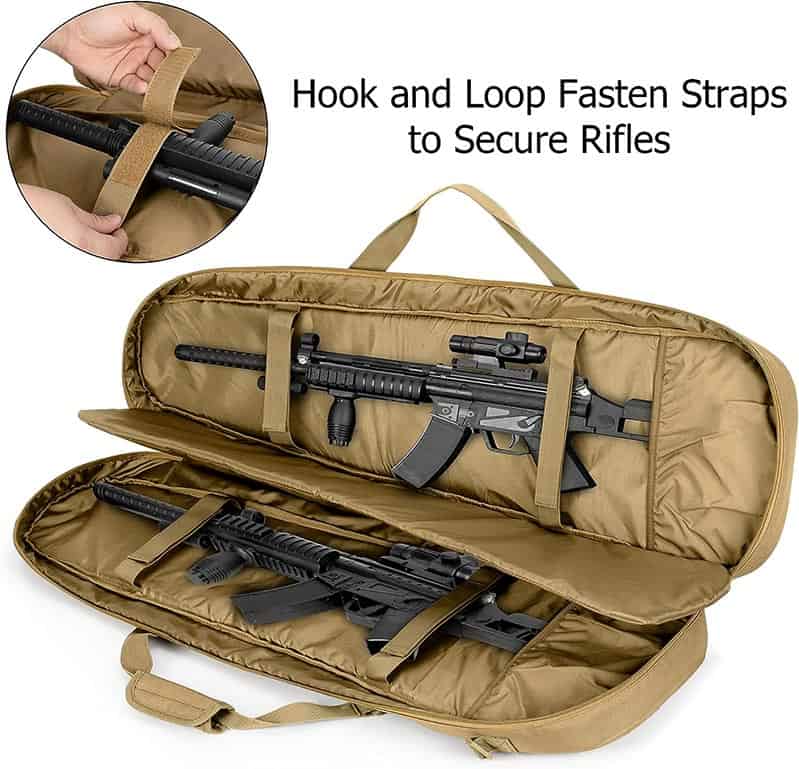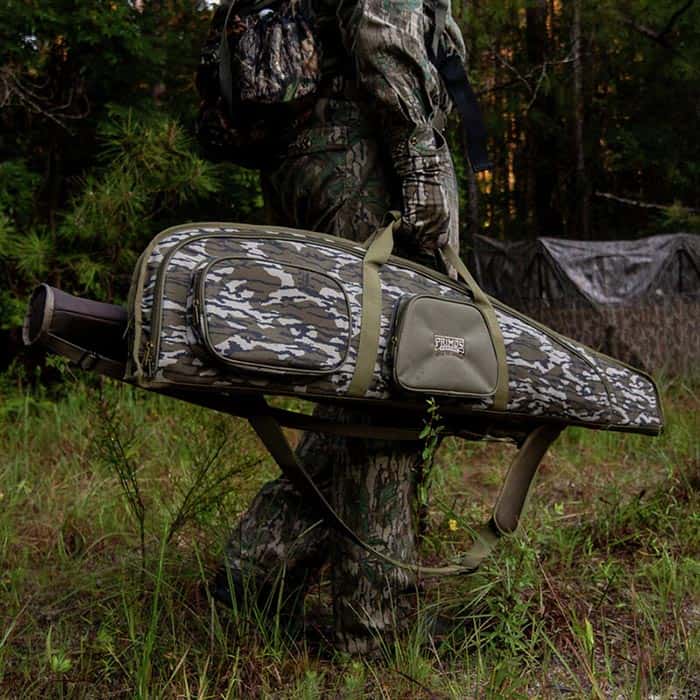When you invest in a high-quality scope, whether it’s for hunting or any other purpose, it becomes an invaluable tool that opens up new worlds and opportunities. However, this precision optical instrument also demands care and protection to ensure it remains in pristine condition for years to come. Whether you’re a seasoned professional or an amateur enthusiast, understanding how to safeguard your scope is paramount.
Let’s say you’re gearing up for a day at the shooting range or embarking on a hunting expedition into the great outdoors. You’ve meticulously selected the perfect rifle scope to ensure your accuracy and precision. But have you thought about how to protect that valuable investment? Riflescopes are delicate optical instruments that demand safeguarding from the elements, bumps, and jolts of transport. Neglecting their protection can lead to scratches, dings, or even worse – diminished performance. That’s why we’re here with a comprehensive guide on what you need to know to protect your scope.

For the purpose of this article, we will discuss two major ways you can protect your scope, which are Riflescope cases and Riflescope bags.
- RifleScope Cases
- Rifle Scope Bag
- Transport Tips for Scope Protection
- Frequently Asked Questions
- Why is scope protection important?
- What are the different types of scope protection available?
- How do I choose the right case for my scope?
- What features should I look for in a scope protection case?
- Are there any specific guidelines for transporting scopes safely?
- Can I use any regular bag for scope protection?
RifleScope Cases
When it comes to safeguarding your valuable scope, one of the most effective options at your disposal is a riflescope case. These cases are designed with the primary purpose of protecting your optics from damage during storage, transport, and use.

Types of Cases Available
Riflescope cases come in several varieties, each offering a unique set of advantages. Here are the main types you’ll encounter:
Hard Cases
Hard cases are typically made from durable materials like plastic or metal, providing robust protection against impacts, shocks, and environmental factors. Many hard cases feature airtight seals, ensuring your scope remains safe from moisture and dust. Some of these cases often come with customizable foam inserts, allowing you to tailor the interior to your specific rifle scope and accessories.
Soft Cases
Soft cases are lightweight and easy to carry, making them a popular choice for those on the move. They usually feature padded interiors that cushion your scope and prevent scratches. Some soft cases include exterior pockets for storing additional gear like cleaning kits or ammunition.
Features and Benefits of Rifle Scope Cases
Rifle scope cases are indispensable accessories for those who value the performance and longevity of their optics. Let’s go deeper into the features and benefits that make investing in a rifle scope case a smart decision:
Optimal Protection
Above all else, rifle scope cases are designed to offer unparalleled protection for your optics. They shield your scope from the harshest of elements and ensure it remains in pristine condition, even in the most challenging environments. Cases are built to withstand impacts, drops, and knocks, guarding against potential damage that can compromise your scope’s accuracy.
Secure Transportation
When you’re on the move, whether hiking to a hunting spot or traveling to a competition, securing your rifle scope is paramount. Cases keep your optics firmly in place, preventing them from shifting, bumping, or colliding with other gear during transit. The stability provided by cases helps maintain your scope’s zero adjustments, ensuring your shots remain consistently on target.
Organization
Many riflescope cases come equipped with compartments, dividers, or custom foam inserts. These features facilitate efficient organization, allowing you to store not only your scope but also accessories, tools, and cleaning supplies neatly and conveniently.
Durability
Hard cases, in particular, are constructed with durability in mind. They are often made from robust materials like impact-resistant plastics or metal alloys, designed to withstand rugged conditions, including harsh weather, rough handling, and outdoor adventures. Investing in a durable case ensures that it serves you for years to come, protecting your optics through countless shooting sessions and hunting seasons.
Considerations When Choosing a Rifle Scope Case
Now that you understand the benefits of scope cases, it’s crucial to make an informed choice when selecting the right one for your needs:
Size and Fit
Ensure that the case is appropriately sized to accommodate your scope and any accessories you plan to carry. A snug fit prevents movement inside the case, minimizing the risk of damage during transit.
Material and Durability
Evaluate the case’s material, especially if you anticipate exposure to extreme conditions. Hard cases excel in rugged environments, while soft cases are more lightweight and suitable for less demanding situations.
Waterproofing
If you plan to use the case in wet conditions or during waterfowl hunting, opt for a case with a good waterproof seal. Keeping moisture at bay is essential for preserving your optics.
Portability
Think about how you’ll be transporting your scope. If you need a case for air travel, make sure it meets airline regulations for firearm transport and is easy to carry.
Budget
Rifle scope cases come in a wide range of price points. Balance your budget with the level of protection and features you require. While high-end cases offer top-notch protection, there are budget-friendly options that can still provide adequate safeguarding.
You can find some of the Best Scope Rifle Cases here.
Rifle Scope Bag

Types of Bags
Rifle scope bags, available in various types, cater to a wide range of preferences and use cases. Whether you prioritize portability, enhanced protection, or quick access, there’s a rifle scope bag designed to meet your specific needs. Let’s explore the different types of bags and their unique characteristics in detail:
Soft Bags
Soft bags are the go-to choice for shooters who value mobility. Constructed from durable fabric materials like nylon or canvas, they offer a feather-light option for those on the move.
The lightweight nature of soft bags ensures you can comfortably carry your scope and accessories without adding significant bulk or weight to your gear.
Soft bags provide a fundamental level of protection against common hazards like dust, scratches, and minor impacts. While they may not rival hard cases in terms of ruggedness, soft bags are perfectly suitable for less demanding situations where extreme protection isn’t required. Unlike padded bags, soft bags often feature limited padding. This makes them an ideal choice for short-distance travel, where the emphasis is on portability rather than heavy-duty protection. Soft bags are a practical choice for shooters heading to the local range or for those seeking convenience in everyday transport.
Padded Bags
Padded bags take rifle scope protection to the next level. They come equipped with extra padding, frequently incorporating foam inserts to provide superior protection against impacts, shocks, and minor accidents. For those who venture into environments where bumps and knocks are a concern, padded bags offer peace of mind by safeguarding against potential damage.
While slightly heavier than regular soft bags due to the added padding, they still maintain good portability. Shooters who prioritize protection without compromising too much on mobility often gravitate toward padded bags.
Sling Bags
Sling bags are the epitome of convenience when it comes to quick and easy access to your rifle scope. Designed to be worn diagonally across the back, they allow you to swiftly retrieve your optics without the need to remove the bag entirely. This feature is particularly advantageous in situations where rapid deployment is essential, such as when hunting or participating in dynamic shooting competitions.
Sling bags are prized for their agility. They are compact, minimizing the bulk you carry, and are ideally suited for scenarios where you need to maintain mobility and move swiftly.
Shooters navigating challenging terrain or confined spaces often appreciate the freedom of movement provided by sling bags.
It’s essential to note that sling bags may have limited space for additional gear and accessories. They are best suited for minimalistic setups where the focus is primarily on the rifle scope and essentials.
Advantages of Bags for Rifle Scope Protection
Portability
Rifle scope bags excel in portability, making them an excellent choice for shooters who are frequently on the move. Compared to hard cases, bags are generally lighter, which is advantageous during outdoor activities where weight is a critical consideration.
Flexibility
Bags are highly flexible and can accommodate scopes of varying sizes and shapes. This flexibility ensures that you can select a bag that perfectly matches your specific rifle scope.
Affordable
Bags are often more budget-friendly than hard cases, offering an attractive balance between protection and cost-effectiveness.
Disadvantages
Limited Protection
While bags provide adequate protection against common hazards, they may not offer the same level of security as hard cases in extreme conditions or against significant impacts. Soft and padded bags may not be entirely waterproof, leaving your optics susceptible to moisture in wet conditions. Be cautious when exposing your bag to heavy rain or other adverse weather conditions.
Less Security
Bags may not offer the same level of security against theft or tampering as hard cases equipped with locks. Additional security measures may be required, especially when transporting firearms.
Factors to Consider When Selecting a Rifle Scope Bag
To make an informed choice, consider the following essential factors:
Size and Fit
Take into account both the length and diameter of the scope, ensuring it fits comfortably inside the bag without excessive movement. Look for additional pockets or compartments within the bag. These can be invaluable for safely storing accessories such as lens caps, cleaning kits, extra magazines, or tools. A well-organized bag keeps all your essentials in one place.
Padding
If protecting your rifle scope from impacts and shocks is a priority, opt for a bag with sufficient padding. Padded bags often feature foam inserts or thick cushioning designed to absorb and disperse the force of any accidental bumps or drops.
Carry Method
Decide on your preferred carry method. Traditional bags typically have handles and shoulder straps for conventional carrying. On the other hand, sling bags are designed to be worn diagonally across the back, providing rapid access to your rifle scope without having to fully remove the bag.
Transport Tips for Scope Protection

Transporting your scope safely and securely is essential to ensure it remains in pristine condition and functions optimally. Whether you’re heading to a remote location for range shooting or simply moving your scope from one place to another, following these transport tips will help safeguard your valuable optical equipment.
Preparing Your Scope for Transport
Before you transport your scope, it’s crucial to clean and maintain it properly. Dust and debris can accumulate on lenses, affecting image quality. Follow the steps in this article, Optics Cleaning Tools and Techniques.
Depending on the type of scope and the transport method, consider detaching certain components to reduce the risk of damage:
Proper Storing Techniques
Proper storage of your scope during transport is crucial to prevent scratches, bumps, and other potential damage. Here are some tips:
Use Scope Protection Cases or Bags: Invest in a high-quality scope protection case or bag that provides a snug fit and ample padding. Ensure that the case or bag is clean and free of debris before placing your scope inside.
Avoid Excessive Heat or Cold: Extreme temperatures can harm your scope. Avoid leaving it in a hot car or exposing it to freezing conditions for extended periods. If possible, keep your scope in a climate-controlled environment during transport.
Transporting Your Scope
The method of transport you choose depends on your destination. Here are considerations for various transport scenarios:
Vehicle Transport: Secure your scope in the trunk or a secure area of your vehicle to minimize vibrations and movement. Use seat belts or other straps to further secure the case or bag in place. Avoid placing heavy items on top of your scope during transport.
Air Travel: If you plan to take your scope on an airplane, check the airline’s policies regarding the transport of fragile equipment. Some airlines may have specific requirements or restrictions. Use a hard-shell case with ample padding to protect your scope from rough handling during baggage handling.
Hiking and Outdoor Adventures: When hiking or camping with your scope, use a backpack designed for carrying optics. These backpacks often have padded compartments and straps to secure your equipment. Consider the weight of your scope and accessories, as well as the terrain you’ll encounter when choosing a backpack.
Frequently Asked Questions
Why is scope protection important?
Scope protection is vital because it keeps your valuable optical equipment safe from damage. It prevents scratches, impacts, and environmental factors like dust and moisture from harming your scope.
What are the different types of scope protection available?
There are two main types: scope protection cases and bags. Cases can be hard or soft, while bags include soft, padded bags and specialized carrying backpacks.
How do I choose the right case for my scope?
Choose a case that fits your scope snugly, ensuring it doesn’t move around inside. Consider the type of protection you need (hard or soft) based on your usage and transportation needs.
What features should I look for in a scope protection case?
Look for cases made of durable materials, weather resistance, locking mechanisms, and custom-fit foam inserts. Ensure it’s suitable for your scope’s size and accessories.
Are there any specific guidelines for transporting scopes safely?
Yes, ensure your scope is clean, detach any fragile components, use a proper case or bag, secure it during transport, and avoid extreme temperatures.
Can I use any regular bag for scope protection?
It’s not recommended. Regular bags lack the necessary padding and protection features. It’s best to invest in a purpose-built scope protection case or bag.

Mike Hardesty is a published freelance gun writer. He also possesses specialized expertise in rifle scopes With dozens of articles and reviews published in Pew Pew Tactical, Snipercountry.com, and TTAG (The Truth About Guns), Mike is considered a firearms expert. His special area of expertise is handguns.
Mike is a long-time shooter. He has been punching paper targets, taking deer and other game and shooting at competitions since about 1975. Other related pursuits include reloading and bullet casting. He currently reloads for over 10 calibers, both handgun and rifle. His reloads, particularly for 9mm, were in great demand during the height of the ammo shortage among family and friends. He donated hundreds of rounds to informal shooting sessions. He was quoted as saying “I do not sell my reloads but I sure will help my guys shoot ’em for free!”. He has a few cherished firearms that he has inherited or otherwise procured — those are his favorites.
He earned B.S. and M.S. degrees from Indiana State University in 1974-1975.
He’s a firearm experts and is the founder of mhardesty.com.
